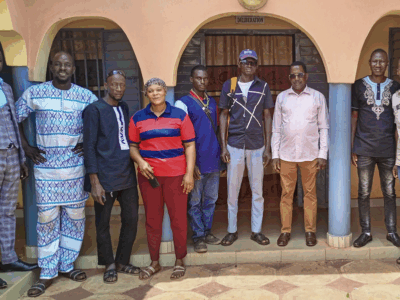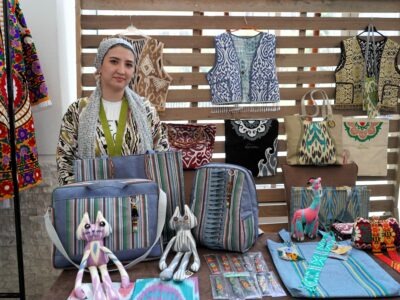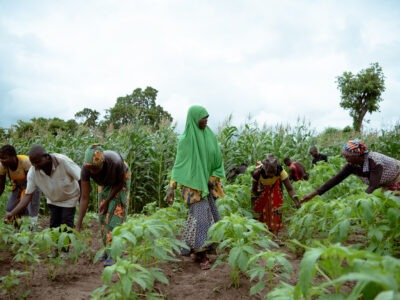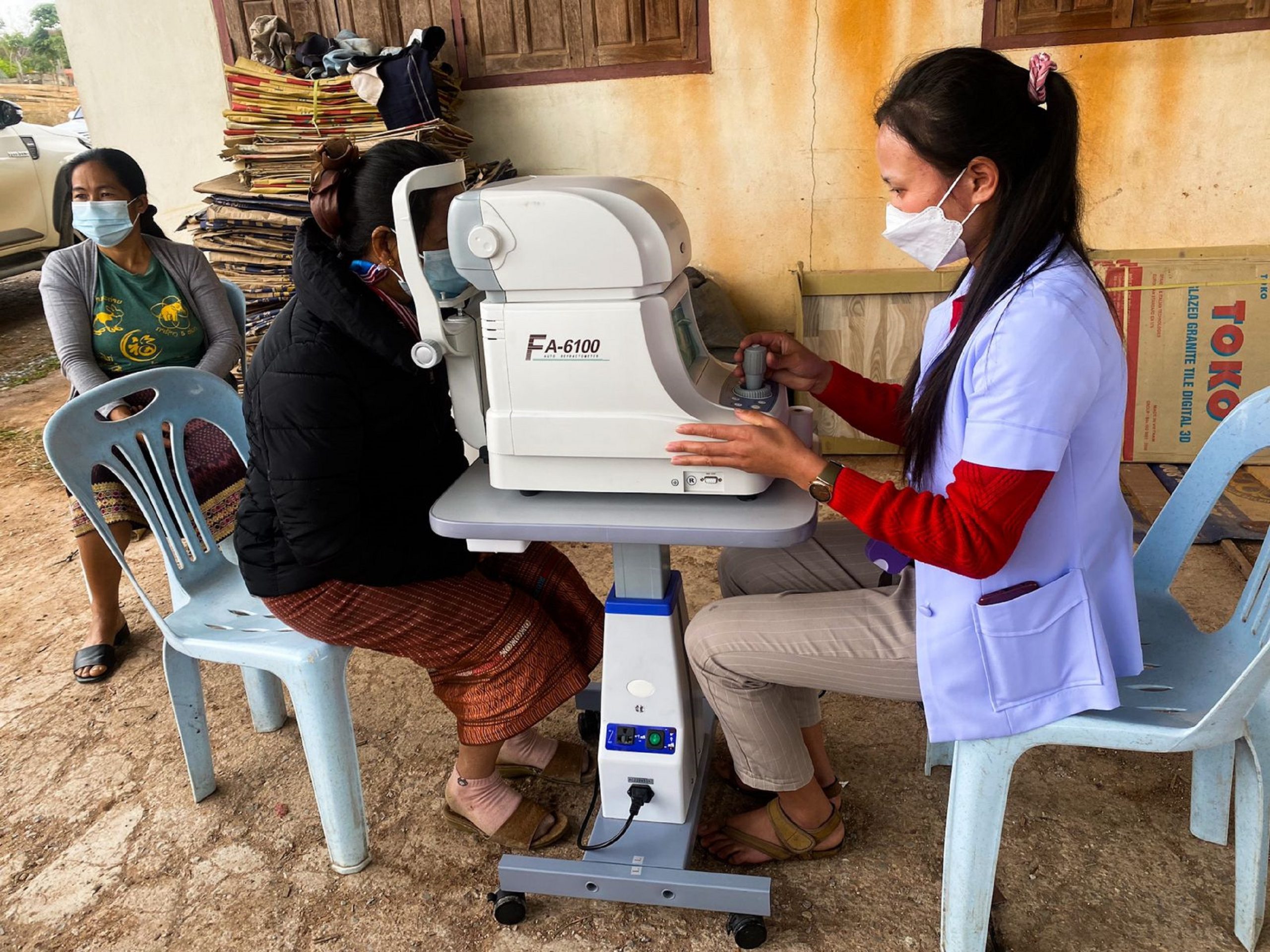
Eyeglasses were invented roughly 700 years ago, but today an estimated 2.5 billion people lack the corrective lenses they need to improve poor vision. In rural villages throughout Laos, many women earn an income by weaving material for traditional Laotian clothing, such as skirts called sihns, on handlooms like the ones used hundreds of years ago. Weaving is the third most important source of income for families in the Xiengkhoung Province. Weavers’ potential incomes range from KIP 80,000 to 150,000 (USD 6.75 to 12.66) a day based on the patterns they produce.
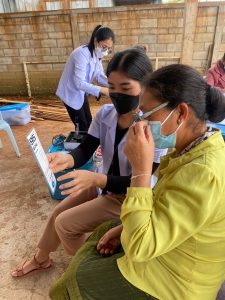
However, eyesight tends to worsen with age and environmental factors, such as dust or smoke from woodfire cooking. Seeing the intricate patterns and fine color detail of thin threads becomes strenuous and taxing. Complex design garner higher prices, but many weavers with declining vision cannot produce the quantity or quality of products they once could. As a result, their incomes suffer.
“When I was young, I could produce over 40 lengths a month. Now my eyesight is less clear, and I maybe manage 30. I make more mistakes and have to redo some of the work.”
— A project participant
USAID Laos Microenterprise, an activity funded by USAID and implemented by ACDI/VOCA, surveyed six businesswomen and 1,360 female weavers who worked under contract for the businesswomen. The survey revealed that many weavers struggle with their eyesight, making it harder to work.
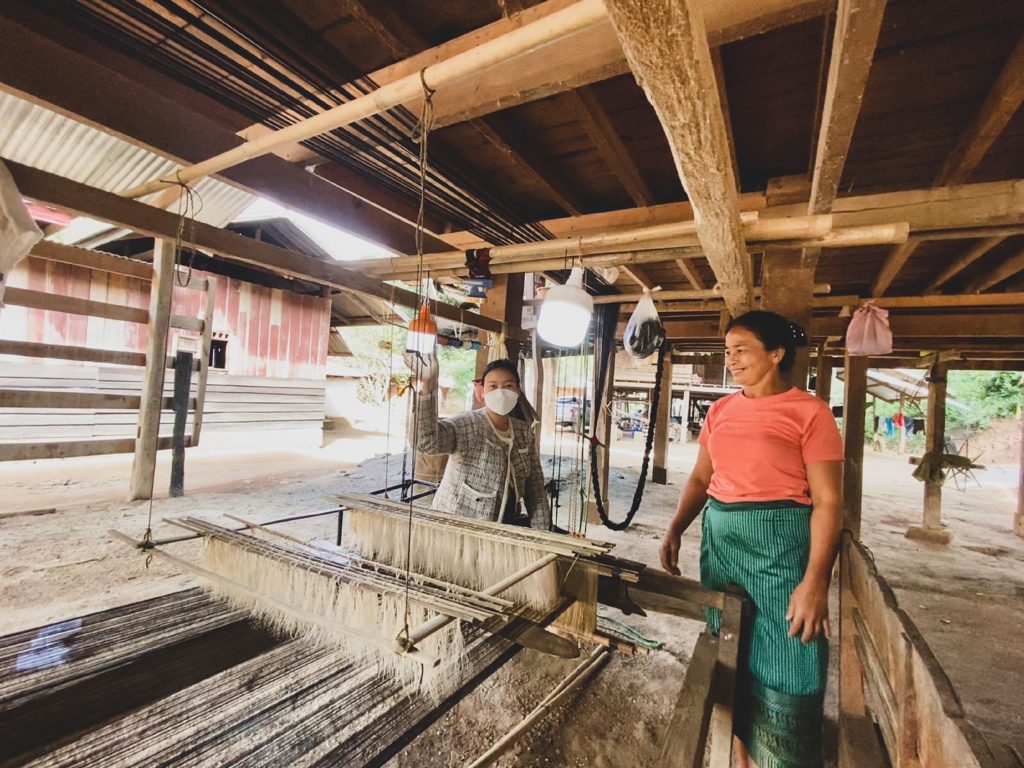
The USAID Laos Microenterprise team organized eye exams and found that 70 percent of the women experienced eye irritation, 61 percent were farsighted, 30 percent had pterygium (a disease in which skin grows over the eye), and a handful had cataracts. Additionally, 4 percent had severe visual impairments or eyesight of 20/200 or more, which in some cases is considered legally blind. However, these women continued to work on the looms to support their families.
The USAID Laos Microenterprise team saw this as an opportunity to support women who had been negatively impacted by the local recession caused by COVID-19 by helping them improve their eyesight and their productivity. Of the 1,360 women examined, 61 percent needed corrective eyeglasses. After receiving corrective eyeglasses from USAID Laos Microenterprise, their average incomes increased by 59 percent, or the equivalent of KIP 660,287 (USD 43) per month. Most of this new income went toward household and farming expenses and children’s school fees.
The USAID Laos Microenterprise’s survey found that 97 percent of the women who received corrective eyewear could work two to six more hours per day. Those aged 40 to 49 increased their work time the most. Seventy percent reported that the quality of their product “improved a lot.” When surveyed, most participants found enough value in their new eyeglasses that they reported being willing to pay KIP 266,000 (USD 20) to replace them should they break.
“Before, buyers would pick over all the pieces I had collected from my women and reject some. Now they take everything, and I do not need to find different markets for poorer quality pieces.”
— A local businesswoman
This simple initiative could have impacts far beyond the confines of weaving to include any work done at arm’s length — from harvesting and sorting crops to processing them. The more accurate and quicker the work, the more earning potential there is.
Learn more about USAID Laos Microenterprise.
Learn more about our work in Laos.

